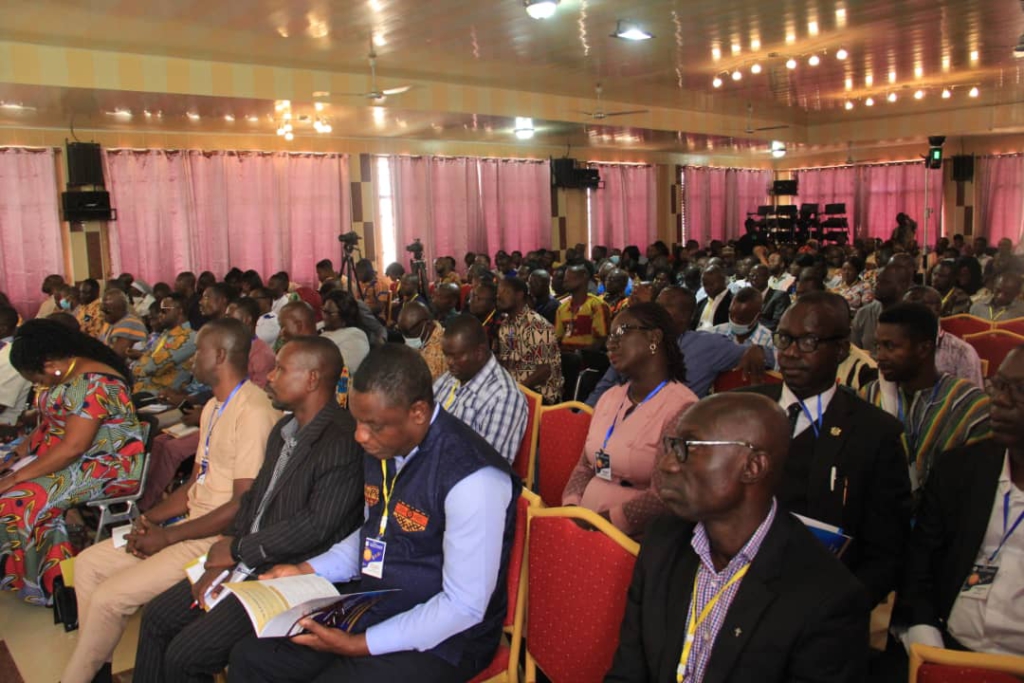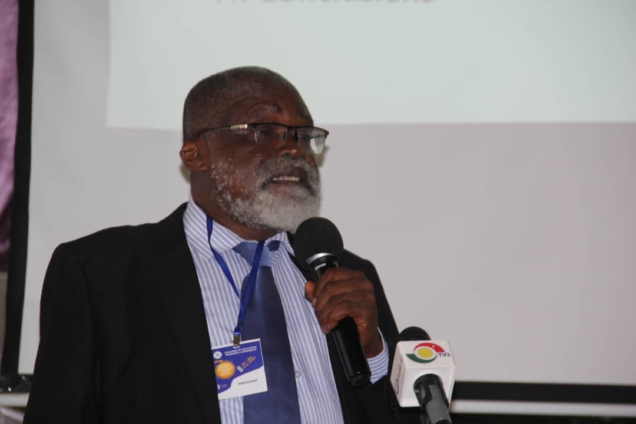A Professor of Geography and Rural Development at the Kwame Nkrumah University of Science and Technology (KNUST), Professor Daniel Buor has called for a major percentage of the government's Appiatse Development Fund be devoted to the education of vulnerable children.
According to him, despite the increased number of children affected by disasters, humanitarian aid for education nearly halved between 2010 and 2015, creating an annual funding gap of $8.5 billion, said Prof Buor.
"In 2015, less than 2% of all humanitarian aid went to education", he noted.
He therefore recommended that, "The government of Ghana has set up Appiate Development Fund to mobilise financial support for the development of the shattered community. It is hoped a significant portion of the fund shall be allocated to the education of vulnerable children".
Professor Bour made the suggestion at a research conference of the Colleges of Education and Social Education Research at Nsuta in the Ashanti region.
In his opinion, there are still teething problems in dealing with post-emergency situations; adding that, humanitarian aid during calamities has been insufficient.
At the conference, Professor Bour further stated that despite calamities in various areas around the country, children are driven to learn, citing an 8-year-old boy named Kwesi who survived the Appiate disaster and is anxious to return to school.

According to him, when UNICEF representatives questioned Kwesi's education, he answered, "I want to go back to school and see how well I did during the exam".
As a result, UNICEF gave school supplies to assist the victims in continuing their education in their temporary housing.
Despite efforts by government and humanitarian organizations to address issues of education for children and youth during calamities, there are still obstacles to overcome.
Per the numbers, 12 percent of children in emergency situations who needed education support were helped, and education in emergency situations only received 48 percent of what it had requested in 2016, which is lower than the norm for other sectors.
According to the Robert Strauss Centre for International Security and Law, almost 500 million school-aged children reside in countries where continuing catastrophes are present. Also 75 million children and teenagers had their education disrupted, had poor-quality education, or dropped out entirely in 2017.
The conference was therefore designed to offer thought leadership within the teacher education community and foster education development partnership between government, CSOs in education, and academia.
It brought together scholars, practitioners, policymakers and government officials in the country to discuss educational advancements.
About 310 researchers, practitioners, policy makers and CSOs are attending the 2-day event.
Latest Stories
-
Paris 2024: Opening ceremony showcases grandiose celebration of French culture and diversity
3 hours -
How decline of Indian vultures led to 500,000 human deaths
4 hours -
Paris 2024: Ghana rocks ‘fabulous fugu’ at olympics opening ceremony
4 hours -
Trust Hospital faces financial strain with rising debt levels – Auditor-General’s report
4 hours -
Electrochem lease: Allocate portions of land to Songor people – Resident demand
5 hours -
82 widows receive financial aid from Chayil Foundation
5 hours -
The silent struggles: Female journalists grapple with Ghana’s high cost of living
5 hours -
BoG yet to make any payment to Service Ghana Auto Group
5 hours -
‘Crushed Young’: The Multimedia Group, JL Properties surprise accident victim’s family with fully-furnished apartment
6 hours -
Asante Kotoko needs structure that would outlive any administration – Opoku Nti
6 hours -
JoyNews exposé on Customs officials demanding bribes airs on July 29
7 hours -
JoyNews Impact Maker Awardee ships first consignment of honey from Kwahu Afram Plains
8 hours -
Joint committee under fire over report on salt mining lease granted Electrochem
8 hours -
Life Lounge with Edem Knight-Tay: Don’t be beaten the third time
8 hours -
Pro-NPP group launched to help ‘Break the 8’
8 hours

